How To Get Rid of Wasps, Hornets, And Yellow Jackets
The mere sight of wasps, hornets, and/or yellow jackets, tends to put a little panic in our heart. And with good reason, especially if you’ve ever been stung. Read on for tips and solutions to help rid these pests from your home – and prevent them from coming back.
Powered by the SC Johnson Center for Insect Science®
Wasp 101
Wasps are actually members of a diverse group of insects, comprised of over 153,000 described species, which also includes ants and bees.
Within this diverse group, only certain wasp species are known to bother and sting people. This makes it important to know what kind of wasps you’re dealing with (or even if they are wasps at all) before you attempt to get rid of them. Get more wasp basics here.
Common stinging wasp species
Correctly identifying wasps can help you understand how to avoid them – especially if you’re at risk of an allergic reaction to a sting.
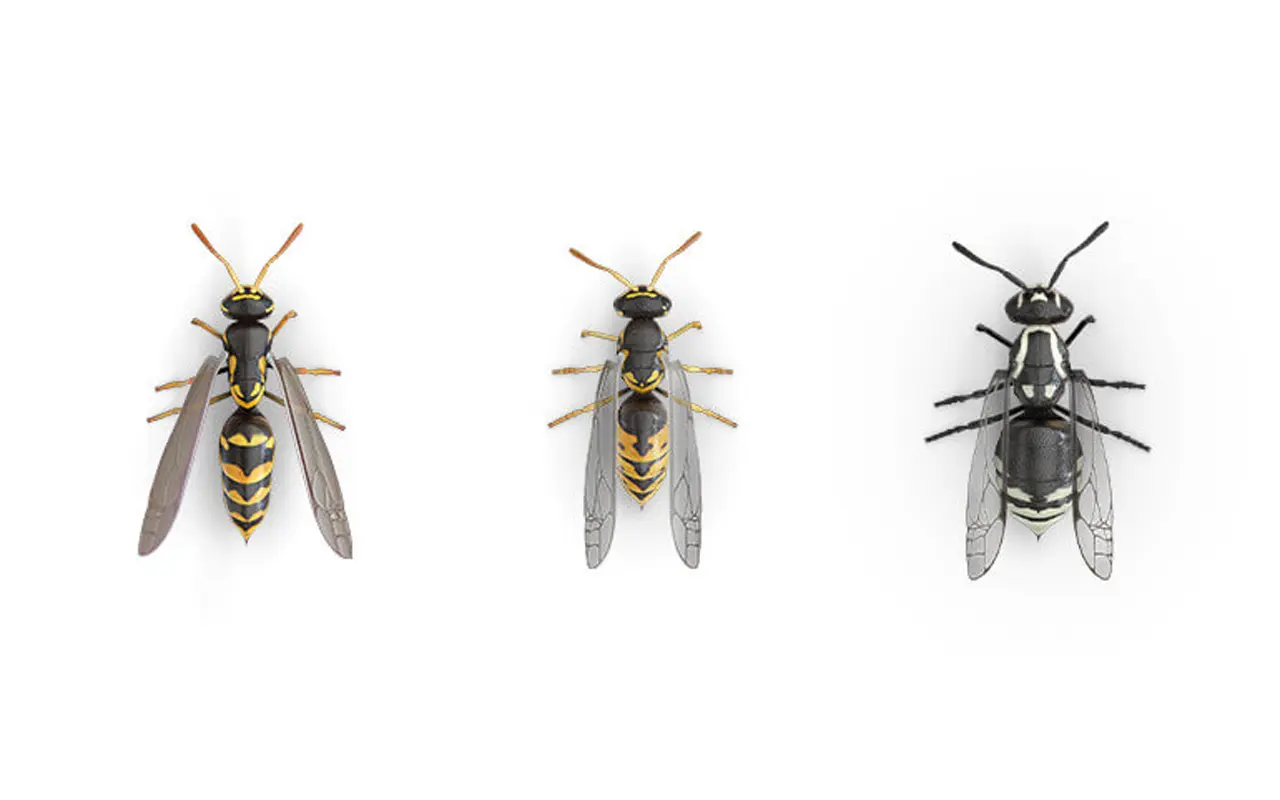
Paper wasp vs. Yellow jacket vs. Hornet
Paper wasps1
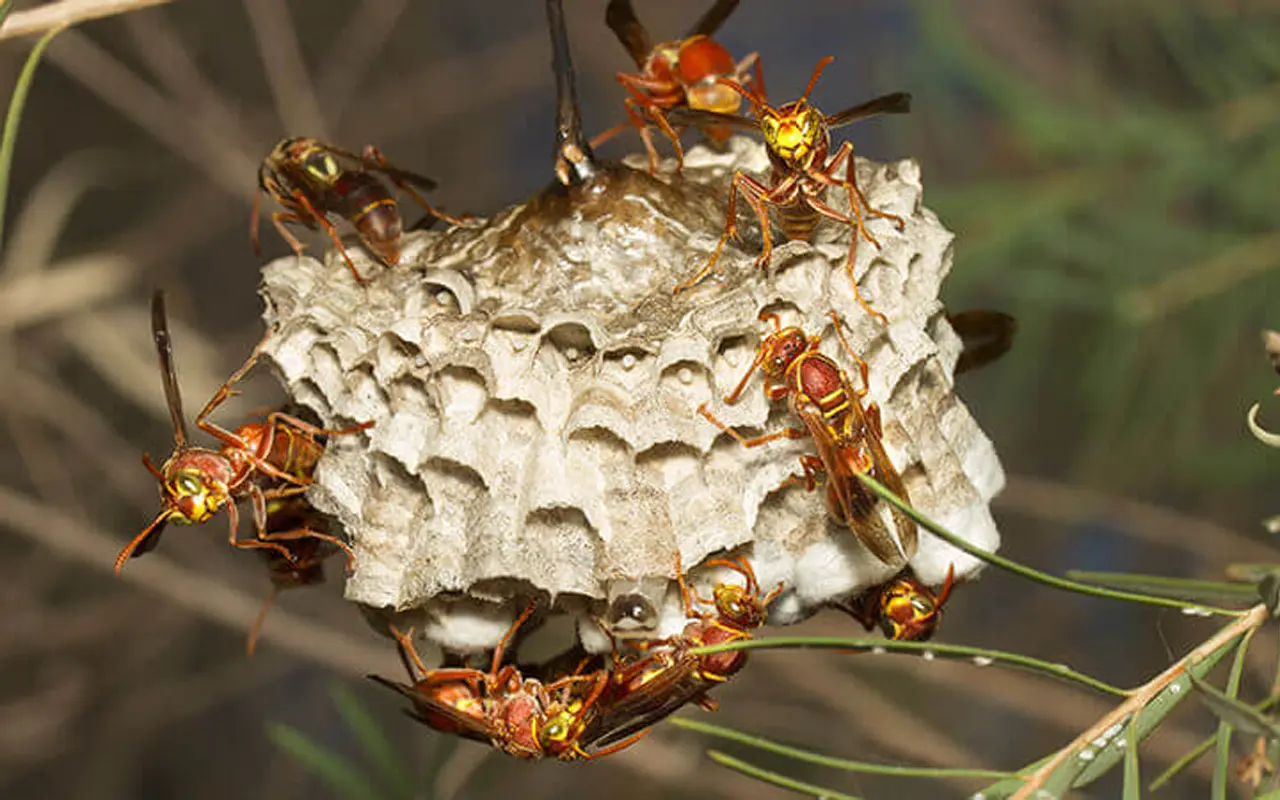
Appearance & Behavior:
- Most paper wasps are golden brown or darker with patches of yellow or red.
- One species of paper wasp, the European paper wasp, is black and yellow – and is often mistaken for yellow jackets.
- You can distinguish paper wasps from other stinging insects by their long, slender waists.
- Paper wasps are usually not aggressive unless their nest is disturbed.
Identifying paper wasp nests:
- Paper wasps build umbrella-like, paper nests with open, hexagon-shaped cells that can be seen from below.
- Their nests are typically found in protected locations, such as under eaves and gutters, as well as in attics, barns, and sheds.
Yellow jackets1
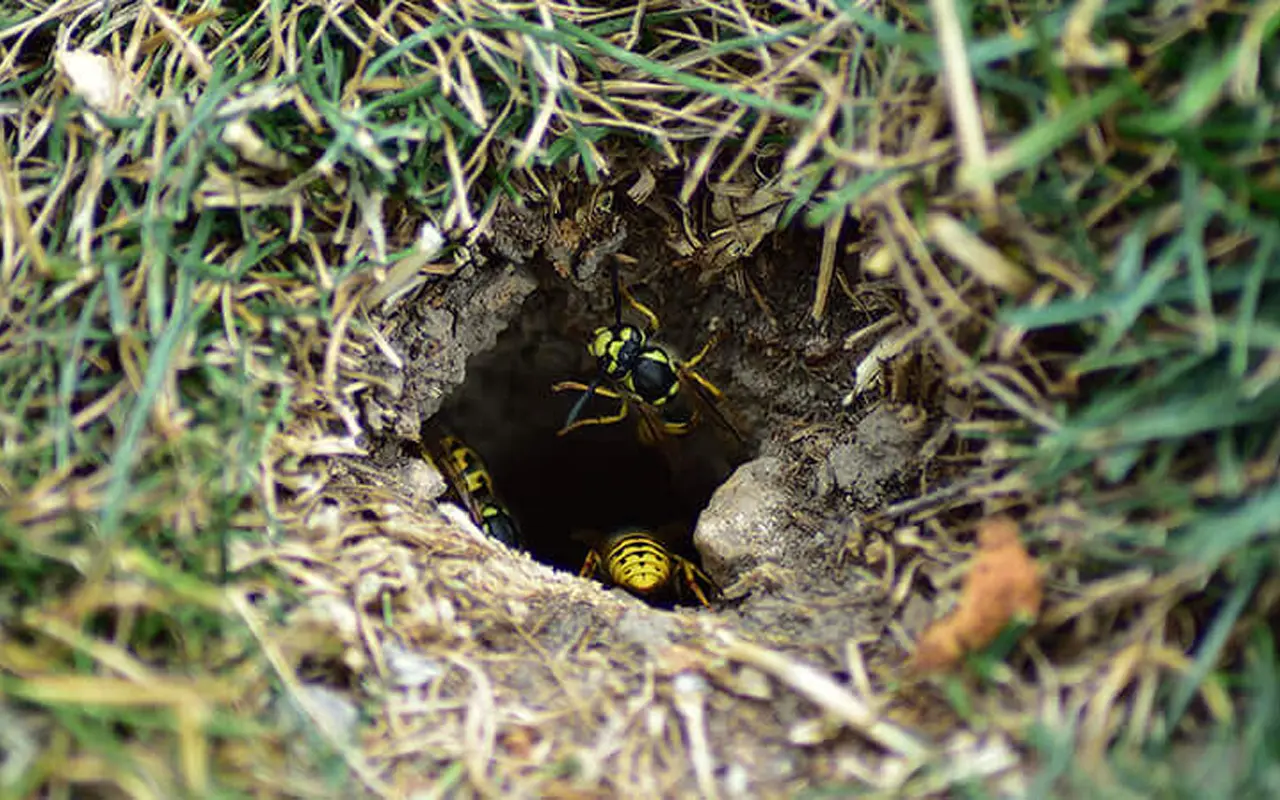
Appearance & behavior:
- Yellow jackets have jagged, bright yellow and black stripes, and are often mistaken for bees due to their similar coloring.
- They’re considered one of the most dangerous stinging insects because they can be unpredictable and will sting aggressively to protect their nests.
Identifying yellow jacket nests:
- Yellow jacket nests have a paper envelope around the outside and usually have a single entrance hole.
- Some species build large, hanging nests from trees or the eaves of buildings. However, most yellow jacket nests are hidden in underground holes in shaded areas or inside wall cavities.
- You may see a small hole in the ground with a mound of dirt around the opening. Another telltale sign of a nest is seeing yellow jackets going in and out of the hole.
Hornets2, 3, 4
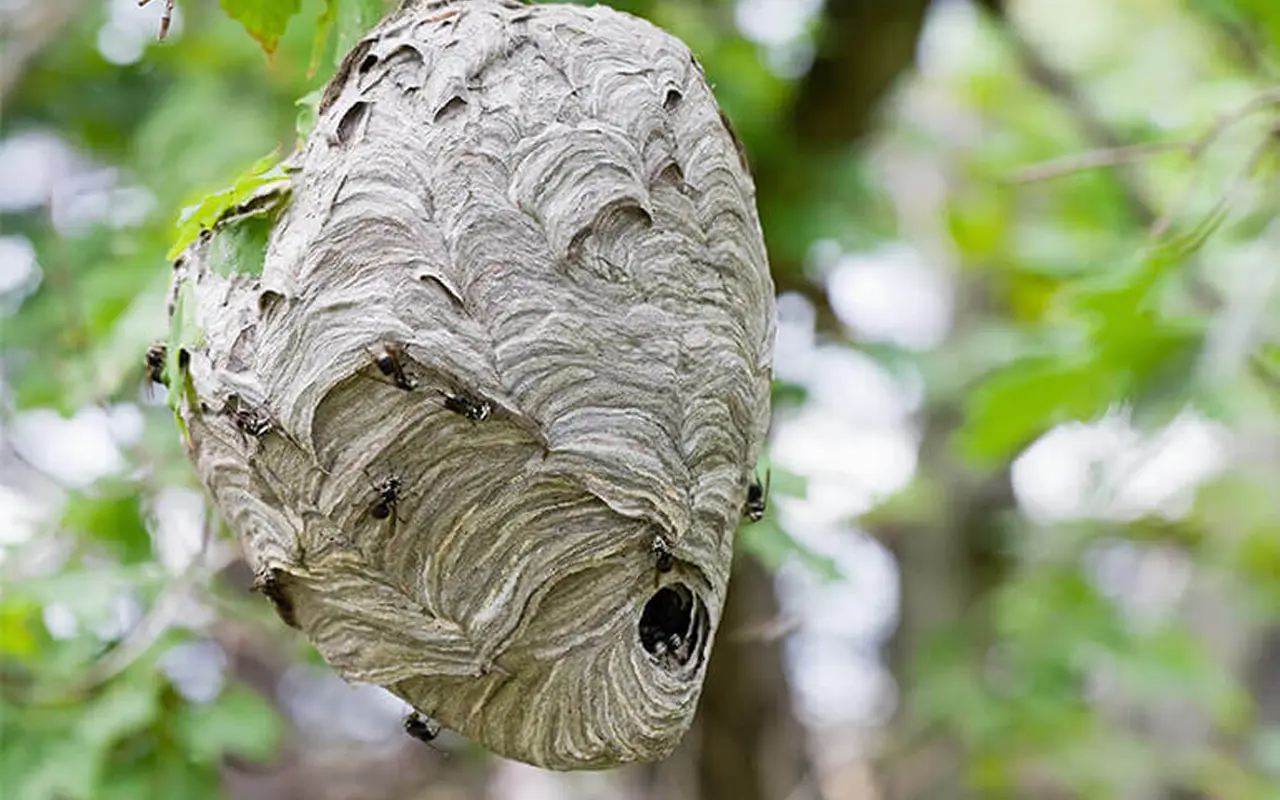
Appearance & behavior:
- Bald-faced hornets have stout, black bodies marked with gray or white bands.
- European hornets are yellow, brown, and black with stout bodies.
- Typically, hornets don’t go out of their way to harm humans unless their nest is disturbed.
Identifying hornet nests:
- Hornet nests are grey and pear-shaped with a single opening at the bottom and are covered with a paper envelope.
- Bald-faced hornet nests can be found hanging from tree branches, shrubs, utility poles, and house siding.
- European hornet nests are typically located in hollow trees or wall cavities.
Is it a wasp or a bee?5
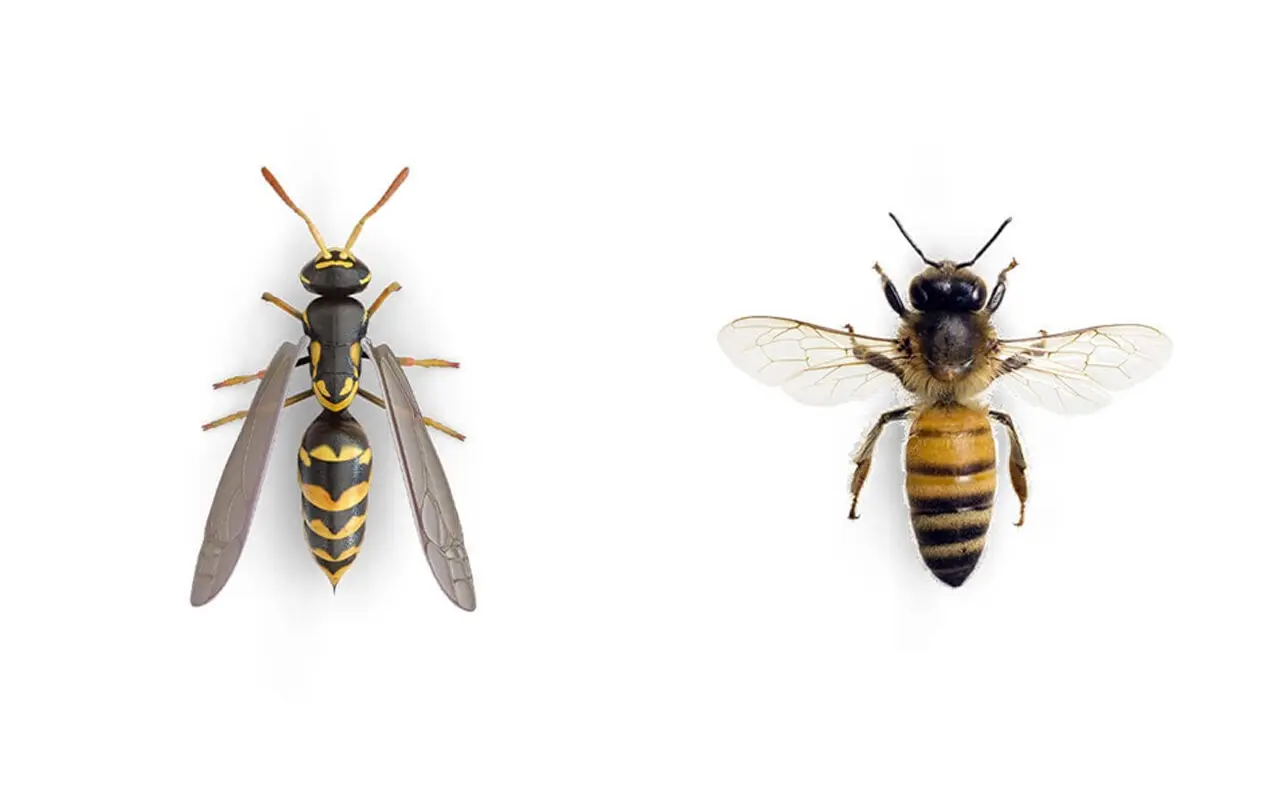
Bees are typically hairy - while wasps, hornets, and yellow jackets are not. They’re also much more docile and are extremely beneficial to us as pollinators.
And while wasp, hornet, and yellow jacket nests are made of paper, bumblebees and honeybees build their nests, or hives, from a waxy substance that they secrete from their abdomens. Honeybees typically build their nests in hollow trees, but they can sometimes be found in wall cavities. Bumblebees usually build their nests in protected areas, such as abandoned rodent dens or thick grass.
Most outdoor bee colonies can be ignored without ever becoming an issue. If they must be removed, we recommend contacting a beekeeper to do it safely and properly.
Treating a wasp, hornet, or yellow jacket nest
To help safeguard your family from stinging insects, use an insecticide spray labeled for treating outdoor nests. Once the nest is thoroughly saturated, it can be removed or left alone — either way it won’t be used again by other wasps. Just be sure to read the label so you know how long to wait after treatment to remove the nest.
What to know when treating nests:
- Treat the nest at dusk or dawn when it is cooler and the insects are less likely to be active.
- Wear gloves and long sleeves to avoid being stung.
- When spraying, make sure you stand away from the nest and not directly underneath.
- Spray with the wind, not against it.
- Never attempt to treat nests alone. It’s important to have someone else present in case you get stung and need medical attention.
- Be sure to have someone else to treat the nest if you’re allergic to stings.
- Always follow the instructions on the product label when treating wasp, hornet, or yellow jacket nests.
How to prevent a wasp, hornet, or yellow jacket infestation
Seal off entry points
Cover up any cracks and crevices that could allow wasps, hornets, or yellow jackets to enter the home. Ensure that your insulation is well maintained and pay special attention to your roofing, basement, and attic, if you have one. If you notice many wasps indoors, then chances are they’ve made a nest somewhere in your home.
Don’t feed them, fight them
Wasps, hornets, and yellow jackets are omnivores, which means they both feed on sugars found in food and drinks, as well as other insects. Homes can serve as plentiful food sources for these pests, so take precautions to keep your food covered and seal off garbage cans both inside and around the home. Keep in mind that once a wasp identifies a food source, it may imprint the location, causing it to return repeatedly.
Soda with a sting
Wasps, hornets, and yellow jackets are extremely attracted to the sugar in some beverages. Always keep your drinking containers covered to prevent them from crawling in and giving you a surprise sting!
Find solutions for wasps
Sources
Raid® solutions for wasps
Explore our family of products designed to help you get tough in the fight against wasps.
Related

Treating and Preventing a Wasp, Hornet, or Yellow Jacket Sting
Wasps, hornets, and yellow jackets sting as a means of self-defense. Their stingers contain venom that can cause mild irritation to some and trigger fatal allergic reactions in others.

How to Identify Bugs
The first step to getting rid of bugs in the house is knowing what kind of critter you’re dealing with. Use our interactive tool to help identify different types of bugs and find out how to fight them.

How Weather Affects Insects
Find out how outdoor temperatures and rain levels affect insects, including their behavior, reproduction rates, feeding habits, and more. Plus, learn what weather conditions drive bugs inside for shelter.




